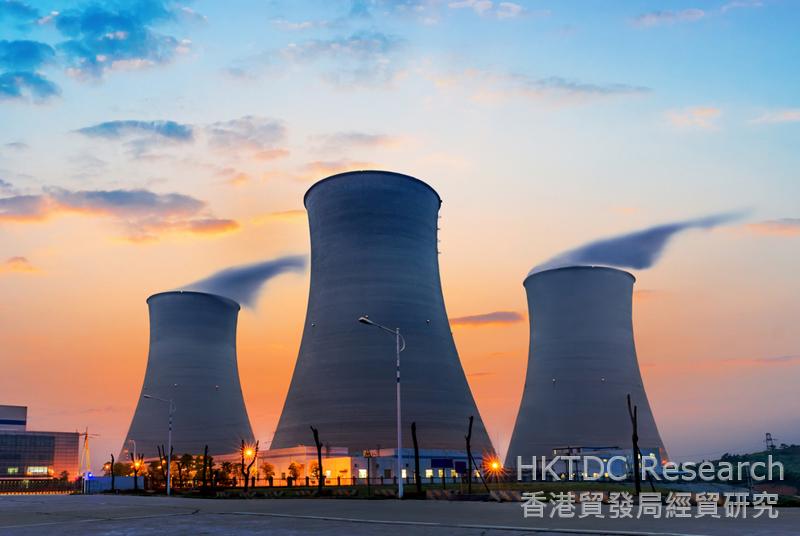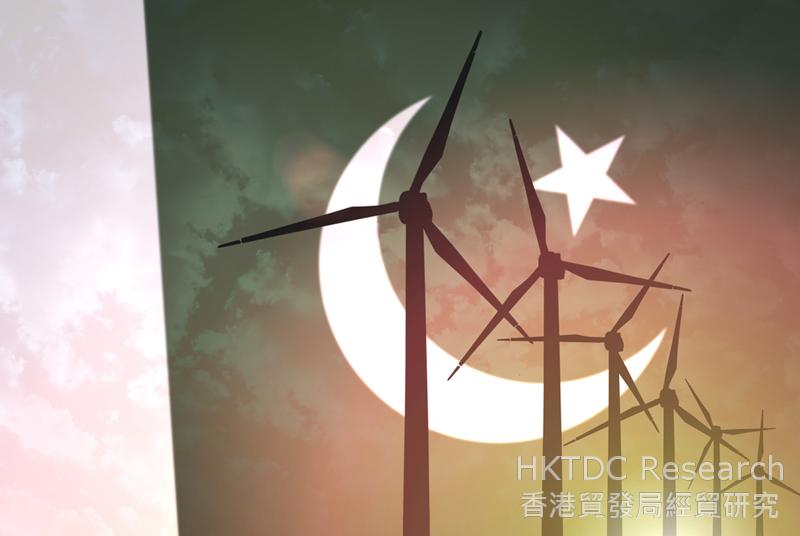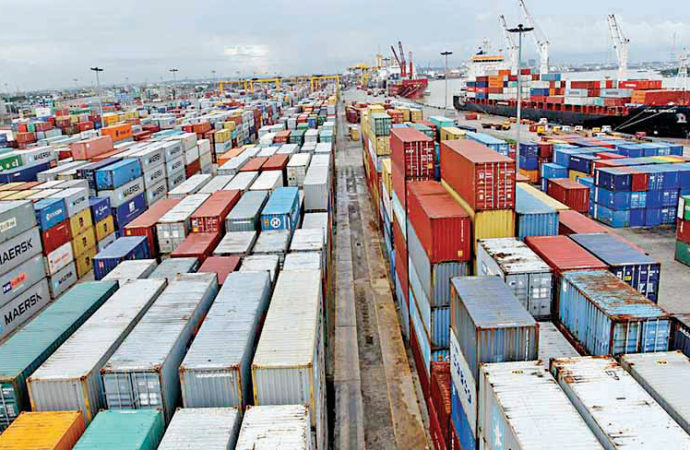South Asia
China Aircraft Leasing Group Holdings Ltd (CALC), an aircraft operating lessor founded in Hong Kong, specialises in providing aircraft full-life solutions, such as aircraft leasing, purchase and leaseback, structured financing to airlines around the world. It also provides value-added services including fleet planning, fleet upgrade and aircraft recycling. In a dynamic market that has been gaining traction year after year, CALC is one of the market players that stand to benefit from the boom. Today, the company has grown to become China’s largest independent aircraft operating lessor, Asia’s first large-scale aircraft recycling facility operator, and one of the top 10 global aircraft lessors in terms of the combined asset value of its fleet and orders placed. Its global presence is continuing to expand.
CALC’s business is mainly divided into two areas: CALC itself is responsible for the leasing of new aircraft; its member company, Aircraft Recycling International (ARI), focuses on the disassembling and recycling of used aircraft and spare parts supply. This unique business model means the company’s services cover an aircraft’s full life cycle – from its days as a new plane to the time it comes to the end of its lifespan. As the first full value-chain aircraft solutions provider in Asia, CALC currently owns and manages 130 aircraft in its fleet and is on track to expand its fleet to more than 300 by year 2023.
Over the past three decades, the aviation leasing industry has been growing at a remarkable speed as more and more airlines prefer to lease, rather than own, their aircraft for operation flexibility and efficiency. The outlook for the industry has become even more positive in recent years, with low interest rates and surging demand for air travel providing strong tailwinds. Amid the boom, CALC launched in 2014 a “globalisation strategy” aimed to carve out a global presence for the company. In less than two years, CALC’s clientele expanded to include airlines in Asia Pacific, Southeast Asia, Europe, Middle East and the United States, many of which are flag carriers or top-tier airlines in their markets.
The aircraft lessor first set its sights on Harbin, the pivot hub of the Longjiang Silk Road Economic Belt under the Belt and Road framework, which connects Eurasia with the Pacific and Baltic countries through a comprehensive land and sea transportation network. In 2014, CALC signed an agreement with the Harbin Municipal Government on the establishment of China’s first and largest aircraft disassembly project, the China Aircraft Disassembly Centre. The centre features an ageing aircraft material recycling system, which provides services to countries including those along the Belt and Road routes.
Also in 2014, CALC entered into leasing agreements with Air India – its first non-Chinese customer – for five new Airbus A320 aircraft. The first of the five planes was delivered during Indian Foreign Minister Sushma Swaraj's trip to China in February 2015.
As the “Aviation Silk Road” continued to gather momentum, CALC expanded its reach into more and more Belt and Road countries. In 2016, it delivered two new Airbus A320 aircraft to Pegasus Airlines, Turkey’s leading low-cost carrier, and four Airbus A320 aircraft to Jetstar Pacific, Vietnam’s first low-cost carrier. In 2017, CALC continued to deliver aircraft to airlines in various parts of the world, including in Russia, one of the largest markets on the Belt and Road.
Currently, aviation is one of the key areas of focus of the Belt and Road Initiative. As of the end of December 2016, China had signed bilateral air transportation agreements with 120 countries and regions. Mike Poon, Chief Executive Officer of CALC, said CALC sees great growth opportunities arising from the Belt and Road Initiative.
“In China, demand for domestic and international air transport services, including different aviation financial services, is growing rapidly. Meanwhile, many Belt and Road countries are emerging economies with an underdeveloped aviation sector. We believe our growth potential is high since we are the first-mover in the industry and one of the few operators that provide full value-chain aircraft solutions and value-added services to our clients around the world,” Poon said.
That is not to say there is no challenge. As with many other cross-border industries, the aircraft lessor sector is exposed to different operational risks, including political instability, credit risk and interconnectivity risk. To counter the risks, which are not unusual in Belt and Road countries, CALC relies on its own professional team with substantial experience in global financing and a comprehensive risk management system. This enables the company, which is listed on the Hong Kong Stock Exchange, to keep risks under control when expanding internationally.
According to Poon, in its continued effort to expand its international presence, CALC, being a Hong Kong company, also enjoys a diversity of advantages that the city offers. They include an open economy, the city’s sophisticated banking and financial sector, the common law system, and Hong Kong’s role as a facilitator of Belt and Road opportunities. In addition, the Hong Kong government’s move last year to grant aircraft leasing tax concessions to qualifying lessors has taken the city a step towards establishing itself as an international aircraft leasing hub. All these local advantages stand CALC in good stead, enabling it to grow fast and in the right direction while playing an effective role in building the “Aviation Silk Road”.



In addition to partnering and collaborating on infrastructure projects, such as building ports, roads and bridges, countries and regions involved in the Belt and Road Initiative have also agreed to synergise medical research and epidemic prevention efforts, which fit with the Belt and Road objectives of promoting cooperation, mutual learning and mutual benefits.
A good example of Belt and Road cooperation involving Hong Kong is the comprehensive Asia Pacific Viral Hepatitis Policy Survey, which published its findings earlier in 2017. The extensive survey, the first to be conducted since 2012, was carried out by the Centre for Global Health under the School of Public Health and Primary Care, Chinese University of Hong Kong (CUHK CGH), with the support of the Coalition to Eradicate Viral Hepatitis in Asia Pacific (CEVHAP), an independent, multidisciplinary non-profit organisation dedicated to hepatitis policy advocacy.
A key aim of the survey was to evaluate the systems and preparedness of Asian governments in the goal to eliminate viral hepatitis by 2030. China’s President Xi Jinping and former World Health Organisation (WHO) Director General Margaret Chan agreed to bring a global health focus to economic development, starting with Belt and Road countries. The countries and territories surveyed included Australia, Bangladesh, China, Hong Kong, Indonesia, Japan, Malaysia, Myanmar, Pakistan, Philippines, Taiwan, Thailand and Vietnam. While globally millions of people have infected with viral hepatitis, the Asia Pacific region is home to the highest percentage of people whose lives are impacted by the virus. Termed by some as the "silent epidemic", estimates suggest that globally, viral hepatitis is responsible for more than a million deaths.
Having worked on hepatitis policy advocacy for a number of years, Elizabeth Fung, Senior Account Manager of FleishmanHillard (Hong Kong) said the international communications firm was ready to provide assistance again. Previously FleishmanHillard worked with various public sector organisations including the provision of communications support to CEVHAP. FleishmanHillard worked closely with CUHK CGH and CEVHAP to provide corporate communication services and helped to compile the final survey report.
"Hong Kong is a key member of the wider Asia Pacific community, and as an agency based in Hong Kong, we want to contribute to the creation of a hepatitis-free future in Asia Pacific," Fung said. Hong Kong has a number of well-known health related research institutions. Hong Kong is also a globally recognised knowledge hub for public health and hepatology (the branch of medicine that incorporates the study of liver, gallbladder and pancreas). "This means we have access to a research team more than capable of meeting international standards," said Fung who also points out that Hong Kong is a regional media hub, with over 50 international media with sizeable operations which contribute to international news coverage. "The presence of quality research partners and access to the media makes Hong Kong an attractive option for coordinating a regional survey," noted Fung.



As well as boosting Pakistan's power generation, deal establishes China as key nuclear technology exporter.
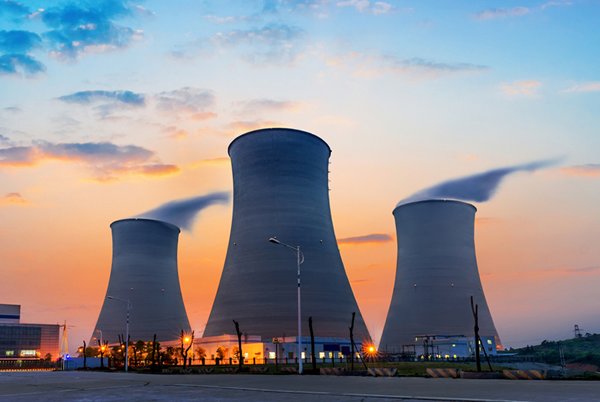
In perhaps one of the more politically sensitive Belt and Road Initiative (BRI) developments, last month saw China and Pakistan agree terms on the installation of an 878-km power transmission line. Once in place, this will link Lahore with southeastern Matiari, a hub city for the electricity generated in many of the China-backed power plants already operational within the China-Pakistan Economic Corridor, the massive infrastructure redevelopment and energy generation programme at the heart of Pakistan's bid to address its acute logistical problems and its vast power undersupply, as well as the BRI, China's own hugely-ambitious infrastructure and trade facilitation programme.
While – aside from a few environmental concerns and suggestions that China's largesse represents a form of financial colonisation – the developments have largely found approval within Pakistan, they have become something a flashpoint with neighbouring India. The relationship between the two countries has long been fraught, with distrust and recriminations dating back to well before 1947, when they emerged as independent states amid the gradual dismantling of the British Empire.
Now, in addition to several territorial issues, India – one of the few major economies not to embrace the benefits of the BRI – is known to be unhappy that China is effectively wooing a number of countries, such as Pakistan and Nepal, that it sees as rightly within its own sphere of influence. Perhaps most gallingly, China is seen as helping Pakistan further develop its nuclear-power sector, a hugely sensitive issue given the long-term nuclear-weapons standoff between the two South Asian countries.
While this latest development does not relate to Pakistan's rapidly expanding nuclear-power sector, with the electricity set to be transmitted via the new power transmission line actually sourced from several China-backed, coal-fired facilities in the west of the country, that is not to say that China's isn't heavily committed to helping Pakistan boost its nuclear-power generation capacity. Indeed, much of the basis of the present and continuing China-Pakistan economic co-operation revolves around power generation – both conventional and nuclear – as the Pakistan government looks to solve its longstanding energy-generation shortfall.
As recently as 2013, with the country's demand topping 15,000 MW, Pakistan only had a total generational capacity of 11,000 MW. With the gap between demand and supply only set to grow, the country has since set about accelerating the expansion of its nuclear-power programme, with China acting as financial backer, technical consultant and lead contractor. Ultimately, it is hoped that this tactical alliance between the two countries will result in Pakistan having a domestic power generation capacity of 40,000 MW by 2050.
That is not to say that China sponsored Pakistan's introduction into the still relatively small number of nations with nuclear-power facilities. Predating China's initial involvement by more than 20 years, 1971 saw Toronto-headquartered GE Canada install and then manage KANUPP1, the Karachi-based facility that produced Pakistan's first nuclear-derived electricity. Although Canada cut all ties to the plant in 1976 after Pakistan refused to sign the Non-Proliferation of Nuclear Weapons Treaty, the plant continued in service until 2002. Following a four-year upgrade, it resumed operation and continues to produce electricity, albeit at a reduced level.
China's involvement with the country's nuclear programme began in August 1993, when the two countries jointly developed the Chashma Nuclear Power Complex in Punjab, Pakistan's most populous province. Marking the first time China had exported its nuclear technology, the installation initially comprised two 300 MW generating units and two subsequent 340 MW units, all of which are now connected to the national grid.
In 2013, China and Pakistan agreed to add a fifth unit to the Chashma facility, which is due to go online in 2020. That same year, construction also began on two state-of-the-art 1,000 MW+ reactors – KANUPP-2 (K-2) and KANUPP-3 (K-3) – close to the original reactor site, with both due to be operational by 2021. Acting under the auspices of the International Atomic Agency, the sector's global regulator, three of the mainland's leading nuclear-power companies – the China General Nuclear Power Group, the China National Nuclear Corporation (CNNC) and the China Atomic Energy Authority – co-operated in the development of the two new facilities, with CNNC covering at least US$6.5 billion of the costs of the $10 billion project through a series of low-cost loans.
At the core of the two new facilities is the third generation HPR1000 Hualong One reactor, the model at the forefront of China's bid to export its nuclear technology. One such model is currently undergoing acceptance tests in the UK, while another has been earmarked as the centrepiece for Argentina's fifth nuclear facility with work on the project scheduled to begin in 2020. In the meantime, as well as helping Pakistan meet the shortfall in its electricity supply, while tying the country into wider goals of the BRI, the Punjab nuclear facility is also acting as China's calling card as it looks to establish itself as a world leader in safe and cost-effective nuclear-power generation.
Geoff de Freitas, Special Correspondent, Lahore
Editor's picks
Trending articles
Visit by Foreign Minister sees transport and hydropower prioritised, with India urged to participate.

Recent high-level talks between China and Nepal seem to have breathed new life into long-planned Belt and Road Initiative (BRI) co-operation between the two nations. Although landlocked, severely underdeveloped Nepal is among the countries with the most to gain from the BRI, China's ambitious international infrastructure development and trade facilitation programme, progress on a number of fronts has been stalled by political, logistical and contractual concerns in recent years.
Following a successful visit to Beijing in April this year, however, which saw Pradeep Kumar Gyawali, Nepal's Foreign Minister, sit down with his mainland counterparts in order to agree a co-operative forward strategy for the two countries, progress on the BRI front is expected to shift-up several gears in the months to come. In particular, it is expected that the development of a long-mooted railway link between Kerung (on the Nepal-China border), Kathmandu (the capital of Nepal) and Lumbini (on the Nepal-India border) is to be prioritised.
Given Nepal's strategic location as a nexus between two mighty economic powerhouses – China to the north and India to the South – it has long been seen as a prime candidate for mainland-backed infrastructure investment. This is viewed as particularly important as its current road, rail and air resources are woefully inadequate and incapable of sustaining the heavy throughput required of such a conveniently-sited trade conduit.
Ironically, though, it is its geographical situation that has acted to stymie any such investment, with India – upon which Nepal has historically relied for much of its economic / security support – somewhat prickly with regard to all things BRI. In practice, this has seen Nepal engaged in a prolonged spell of political and economic brinkmanship, with the 24-million strong nation striving to maximise inward investment without making the kind of unreserved commitment to the BRI that would alienate India. Following the recent official visit, however, during which both parties called on India to actively participate in both the BRI project and in shaping Nepal's future development, it could be that things will now move forward at a more dynamic rate.
One of the first signs of renewed commitment came last month when Nepal's Investment Promotion Board approved a US$128 million mainland-sourced investment package for the development of the Super Sanjen project, a 78MW hydropower facility sited in the north of the country. Under the terms of the deal, China Harbour Engineering, the lead contractor, will have a 92% stake in the completed facility.
In addition to transport infrastructure improvements, solving Nepal's ongoing energy crisis was identified as an early BRI priority. The issue came under the spotlight again last month when the Nepalese government published its medium-term energy strategy.
Among its key aims is that the country should have a domestic energy generation capacity of 3,000MW by the end of 2021, a 300% increase on its current level. Even more ambitiously, it aims to take the overall level to 15,000MW by 2030, with 10,000MW allocated to meeting domestic requirements and the remainder sold on to China's national grid.
Nepal is unlikely to be able to deliver on its energy-generation targets without the aid of one – or both – of the economic behemoths it is sandwiched between. At present, it looks as though China is in pole position to help the mountain kingdom make good on its proposed hydropower development programme. This is despite the series of false starts that dogged earlier energy projects – most famously in the case of the massive 1,200MW Budhi Gandaki Hydropower Project, on which Nepal pulled the plug in 2016, dismissing the China Gezhouba Group Corporation (CGGC), the Wuhan-headquartered lead contractor, in the process.
Post Gyawali's successful Beijing expedition, which was seen as laying the groundwork for an official state visit to China by Khadga Prasad Sharma Oli, Nepal's recently re-elected Prime Minister, it could be that a number of these stalled hydropower projects will be dusted down and rebooted. In all likelihood, this would see Oli – a politician seen as having far greater partiality towards China than many of his predecessors – reappointing many of the mainland contractors initially tied to these projects.
Despite this, it does still leave a question mark over India's response to the increasingly chummy relationship between Nepal and China. It also won't have eluded the attention of the New Delhi government that, at $8.3 billion, China's investment in Nepal is now more than four times its own. In many ways, negotiating the political and diplomatic challenges occasioned by its foray into Nepal may prove far trickier for China than any of the civil engineering undertakings it has now signed up for.
Geoff de Freitas, Special Correspondent, Kathmandu
Editor's picks
Trending articles
US$57 billion of Belt and Road Initiative funding is set to help remedy Pakistan's chronic energy shortages.

The selection of Karachi, Pakistan's largest city, as the location for the 17th World Wind Energy Conference and Exhibition (held earlier this month) was far from random. Over recent years, Pakistan has invested heavily in wind-power, while also enlisting Chinese backing, under the Belt and Road Initiative (BRI) framework, in order to bring its new environmentally-friendly facilities online.
As a result, in September 2017, the country's National Electric Power Regulatory Authority announced that the share of wind power in the nation's overall energy mix had increased by 0.46% to 1.23%. This has ensured that the country is well on track to meet its 2030 target of having 5% of its overall electricity derived from wind-power, a goal set back in 2006.
Pakistan's ambitious energy-development program has been driven by its long-overdue need to address its chronic electricity shortfall. Although the bulk of its enhanced supply is expected to be derived from domestic coal reserves, the development of wind, solar and hydro sources has also been prioritised in recent years. This has been spurred by growing environmental awareness in the country and, crucially, a steady fall in the cost of renewable-energy generation.
The first commercial wind project in the country came online in 2009 as part of the initial development phase of the Jhimpir Wind Power Plant. The project was overseen and managed by Zorlu Energy Pakistan, a subsidiary of Turkey's Zorlu Enerji. With additional wind turbines coming into operation, the plant's capacity reached 56.4MW in July 2013, all of which was fed into the country's national grid.
To date, though, this is a seen as only scratching the surface in terms of what could ultimately be delivered. Set in the Gharo-Jhimpir Wind Corridor, a 180km strip of coastal land, the Pakistan Meteorological Department sees the facility as having the potential to produce up to 11,000MW of wind-derived electricity.
Following the success of this first plant, a number of additional wind-power projects were swiftly commissioned. By the end of 2015, according to the Alternate Energy Development Board (AEDB), the Pakistani government's renewable-energy agency, there were more than 40 wind-energy projects under development across the country. Once online, they are expected to contribute about 2,050MW to the national grid. By mid-2017, 13 such projects had become operational, representing a net grid contribution of 200MW.
Subsequently, once the China-Pakistan Economic Corridor (CPEC) – one of the key BRI conduits – was established, some US$57 billion of mainland funding was earmarked for investing in the development of Pakistan's infrastructure, with much of this allocated to energy-related projects. Of these, four wind-farm investments were prioritised – Sapphire Wind Power Plant, Sachal Wind Farm, Dawood Wind Farm and Jhimpir Wind Farm.
The first of these to be completed was the 52.8MW Sapphire Wind Power Plant, which became operational at the end of November 2015. Beijing-headquartered HydroChina, a subsidiary of the Power Construction Corporation of China, was the lead contractor on the project, its first such installation in Pakistan.
The company also took the lead on the 50MW Sachal Wind Farm, which came online in April 2017 and is, again, based in the Jhimpir Wind Corridor. The farm is owned by Sachal Energy, a wholly-owned subsidiary of the Arif Habib Corporation, one of Pakistan's leading investment groups. Debt financing was provided by the Industrial and Commercial Bank of China (ICBC) and the estimated cost of the project was $134 million.
The third priority project, the 50MW Dawood Wind Farm, was developed on tidal flats near the city of Banbhore, about 80km east of Karachi. Also coming online last April, the project was backed by a $78.8 million ICBC credit line, while its turbines came courtesy of Guangdong's China Ming Yang Wind Power Group in association with Aerodyn Energiesysteme, a German wind-power specialist. The final project – the UEP 100MW Jhimpir Wind Farm – was also developed by HydroChina. Following investment of about $250 million, it became operational in June last year.
At present, there are nine more Chinese-backed wind-power projects at various stages of completion across Pakistan. Once operational, they will feed an additional 445MW into the country's national grid.
Geoff de Freitas, Special Correspondent, Karachi
Editor's picks
Trending articles
US$1.7 billion of Chinese backing set to deliver Karnaphuli Tunnel Project, a key Belt and Road component.
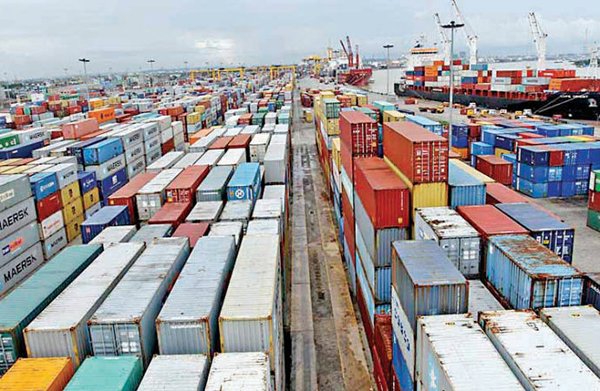
Construction work on the China-backed Karnaphuli Multi-Channel Tunnel Project in southern Bangladesh is now well under way. The tunnel is seen as a key component in several projects related to the Belt and Road Initiative (BRI), China's ambitious international infrastructure development and trade facilitation programme. Once completed, the tunnel will connect the port city of Chittagong to the far side of the Karnaphuli river, the site of a new Chinese economic zone.
Due to be completed in 2020, the tunnel will slash the travel time between Chittagong and Cox's Bazar, one of the country's leading tourist destinations, and ease the heavy congestion on the existing two bridges across the river, while also connecting-up with the Korean Export Processing Zone and Shah Amanat International Airport. It will also feed into two other projects that are currently under way – the Asian Highway and the Dhaka-Chittagong-Cox's Bazar Highway.
At present, it looks as if all of the required funding for the tunnel is now in place. According to government sources, US$1.02 billion of initial backing was secured from the China Exim Bank, with a further $663 million facility – repayable over 20 years at an interest rate of 2% – subsequently confirmed. The outstanding balance was then provided by the Bangladesh government.
The project has been jointly managed by the Bangladesh Bridge Authority (BBA) and the China Communication Construction Company, with the Hong Kong branch of Ove Arup & Partners providing additional design and technical support. With a total length of 9km – of which 3.4km will run below the river – it will be the first tunnel in Bangladesh to facilitate simultaneous road and rail transit.
The tunnel is just one of a range of China-backed projects currently underway in the region. Foremost among these is the Special Chinese Economic Zone – formally known as the Anwara 2 Economic Zone – which was officially established in June last year following the signing of a Memorandum of Understanding (MoU) between the Bangladesh Economic Zones Authority (BEZA) and the China Harbour Engineering Company (CHEC).
According to Paban Chowdhury, BEZA's Executive Chairman, the zone will have the capacity to house 150-200 industrial units and will focus on a range of different industrial sectors, including shipbuilding, pharmaceuticals, electronics, agro-business, IT, chemicals, power and textiles. With up to 75,000 jobs set to be created, the zone will not exclusively rely on Chinese businesses, with Chowdhury saying: "As per our initial agreement, while Chinese investors will get preferential treatment, other local and overseas businesses will also be welcome."
In the case of both the tunnel and the economic zone, their success is heavily reliant on the Chittagong port's facilities being substantially upgraded. The port currently handles a staggering 92% of Bangladesh's ocean freight, with the country's surging economy seeing the required throughput growing by about 14% a year.
The port, however, is heavily silted and extremely congested, while also lacking the depth required for the current generation of tankers. As a result, it is widely accepted that a deep-water port upgrade is a priority for the country.
Over recent years, though, attempts to implement such an upgrade have fallen foul of a series of international disagreements. Back in 2010, China agreed to put up the money for the port's expansion, as well as for the development of a deep-water port on the nearby Sonadia island. Then, in February 2016, in something of an abrupt about-turn, the project was scrapped in favour of a Japanese-funded port development at nearby Matarbari, the proposed site of a massive coal-fired power station.
Such wrangling, however, has not lessened Bangladesh's strategic significance to the overall BRI project. The country is a key component of the proposed Bangladesh-China-India-Myanmar corridor (BCIM), one of the programme's six priority routes.
Overall, Bangladesh is also seen as a vital conduit between the semi-industrialised ASEAN countries and the highly populated Indian sub-continent. Its strategic location between South Asia and Southeast Asia also makes it an essential link in the BRI's mission of trans-regional integration.
Geoff de Freitas, Special Correspondent, Dhaka
Editor's picks
Trending articles
Export-Import Bank of China to fund completion of Padma Bridge Rail Link, a key conduit of the Belt and Road Initiative.
The Padma Bridge Rail Link: Carrying cars, trains and a nation's economic aspirations.
Later this month, the Export-Import Bank of China is expected to confirm its willingness to cover the US$300 million funding shortfall that has left the Padma Bridge Rail Link in development limbo over the past few months. As well as being a key element in Bangladesh's bid to radically overhaul its internal transport network, the 6.15km bridge is also seen as a prime conduit for the Belt and Road Initiative, China's massively ambitious international infrastructure development and trade facilitation programme.
First mooted in 1999, but not formally commissioned until 2006, the contract to develop the multi-purpose, 42-pillar, $3.69 billion bridge was awarded to China Railway Group, the Beijing-headquartered, state-owned construction company that is, arguably, the world's largest civil engineering conglomerate. As of October this year, progress on the project was said to be approaching the halfway mark.
Once completed, this multi-purpose, double-decker bridge will span the Padma River – actually the lower course of the Ganges, the world's third-largest river – connecting the Louhajong region, south of Dhaka, the Bangladeshi capital, with the districts of Munshiganj, Shariatpur and Madaripur. In addition to the rail link on its lower level, the bridge will also house a four-lane highway on its upper deck. When it comes online in late 2018, it will be the largest bridge in Bangladesh and the country's first fixed river crossing open to road traffic.
The bridge is a key component in the far larger Dhaka-Khulna Railway Project, itself an integral part of Bangladesh's grand strategy to improve access to the capital from the southwest of the country. It is also expected to boost Dhaka's ambitions to become a transport hub for passengers and freight in transit from the coastal areas of the country to its northern and eastern regions.
The railway itself is scheduled to be up and running by 2022 and will cut the travel time from Dhaka and Khulna, Bangladesh's third-largest city, to just three and a half hours, a significant reduction on the current journey time of seven hours or more. As well as installing 215km of upgraded track, 66 large and 244 small bridges have been constructed in order to bring the project to fruition, in addition to the building of 14 new stations and the redevelopment of six existing facilities.
The line itself will also feed into the Southern Corridor of the Trans-Asian Railway, a 14,080km rail route that will eventually run from Singapore to Turkey. One of the primary roles of the Dhaka-Khulna link will be to act as a rapid land transport conduit for goods in passage to and from the Mongla Port, the second-busiest marine cargo handling facility in Bangladesh. A further rail project will also see Dhaka linked to Payra, a new deep-sea port facility being developed in the south of the country.
For Bangladesh, the bridge and its subsequent rail links are just one of seven state-initiated mega development projects set to transform the country, broadening its economic base, upping its appeal for overseas investors, creating jobs and helping to alleviate the poverty that blights the lives of many of its citizens. Among the other key projects under way are the construction of a series of nuclear and coal-fired power-generation plants, upgrades to several of the country's sea ports and a new gas processing terminal.
From China's point of view, the Padma Bridge Rail Link forms part of the Bangladesh-China-India-Myanmar Economic Corridor (BCIM), a key BRI channel. Once completed, the 2,800km corridor will link Kolkata, the capital of the Indian state of West Bengal, with Kunming, the largest city in southwest China's Yunnan province, via Assam, Bangladesh, Manipur and Myanmar.
Geoff de Freitas, Special Correspondent, Dhaka
Editor's picks
Trending articles
By Asian Development Bank
Highlights
- Developing Asia will need to invest $26 trillion from 2016 to 2030, or $1.7 trillion per year, if the region is to maintain its growth momentum, eradicate poverty, and respond to climate change (climate-adjusted estimate). Without climate change mitigation and adaptation costs, $22.6 trillion will be needed, or $1.5 trillion per year (baseline estimate).
- Of the total climate-adjusted investment needs over 2016–2030, $14.7 trillion will be for power and $8.4 trillion for transport. Investments in telecommunications will reach $2.3 trillion, with water and sanitation costs at $800 billion over the period.
- East Asia will account for 61% of climate-adjusted investment needs through 2030. As a percentage of gross domestic product (GDP), however, the Pacific leads all other subregions, requiring investments valued at 9.1% of GDP. This is followed by South Asia at 8.8%, Central Asia at 7.8%, Southeast Asia at 5.7%, and East Asia at 5.2% of GDP.
- The $1.7 trillion annual estimate is more than double the $750 billion Asian Development Bank (ADB) estimated in 2009. The inclusion of climate-related investments is a major contributing factor. A more important factor is the continued rapid growth forecasted for the region, which generates new infrastructure demand. The inclusion of all 45 ADB member countries in developing Asia, compared to 32 in the 2009 report, and the use of 2015 prices versus 2008 prices also explain the increase.
- Currently, the region annually invests an estimated $881 billion in infrastructure (for 25 economies with adequate data, comprising 96% of the region’s population). The infrastructure investment gap—the difference between investment needs and current investment levels—equals 2.4% of projected GDP for the 5-year period from 2016 to 2020 when incorporating climate mitigation and adaptation costs.
- Without the People’s Republic of China (PRC), the gap for the remaining economies rises to a much higher 5% of their projected GDP. Fiscal reforms could generate additional revenues equivalent to 2% of GDP to bridge around 40% of the gap for these economies. For the private sector to fill the remaining 60% of the gap, or 3% of GDP, it would have to increase investments from about $63 billion today to as high as $250 billion a year over 2016–2020.
- Regulatory and institutional reforms are needed to make infrastructure more attractive to private investors and generate a pipeline of bankable projects for public–private partnerships (PPPs). Countries should implement PPP-related reforms such as enacting PPP laws, streamlining PPP procurement and bidding processes, introducing dispute resolution mechanisms, and establishing independent PPP government units. Deepening of capital markets is also needed to help channel the region’s substantial savings into productive infrastructure investment.
- Multilateral development banks (MDB) have financed an estimated 2.5% of infrastructure investments in developing Asia. Excluding the PRC and India, MDB contributions rise above 10%. A growing proportion of ADB finance is now going to private sector infrastructure projects. Beyond finance, ADB is playing an important role in Asia by sharing expertise and knowledge to identify, design, and implement good projects. ADB is scaling up operations, integrating more advanced and cleaner technology into projects, and streamlining procedures. ADB will also promote investment friendly policies and regulatory and institutional reforms.
This article was first published by the Asian Development Bank. Please click to read the full report.
Editor's picks
Trending articles
Tax incentives and financing expertise for Belt and Road Initiative projects offer huge opportunities for Hong Kong as a treasury centre, says Paul She of global accounting and consultancy firm, Mazars. The firm is focusing on technology clients related to the Belt and Road – some for IPO launch on the Hong Kong Stock Exchange – companies “often missed by the market”.
Speaker:
Paul She, Practising Director, Mazars CPA Limited
Related Links:
Hong Kong Trade Development Council
http://www.hktdc.com
HKTDC Belt and Road Portal
http://beltandroad.hktdc.com/en/



Mainland Headwear Holdings Ltd was established in 1986 and listed in Hong Kong in 2000, engaging in the design, manufacturing, trade and retail of casual headwear. In recent years, Mainland Headwear has expanded its businesses through mergers and acquisitions as well as the establishment of strategic alliances, including signing a manufacturing agreement with New Era Cap Co., Inc., acquiring H3 Sportgear LLC and San Diego Hat Company, and forming a joint venture with Promotional Partners Worldwide Group Ltd to design, manufacture, and sell Sanrio products in the Chinese mainland. Headquartered in Hong Kong, Mainland Headwear has factories in Shenzhen and Bangladesh, manufacturing licensed casual headwear which are primarily sold in the US and European markets.
Capitalising on the Belt and Road Initiative, Mainland Headwear set up a 25,000-square-metre factory in rural Bangladesh in 2013 to boost production as the rise in labour costs on the Chinese mainland was weighing on profits. In its initial three years of operation, the company’s factory expanded significantly, with the number of staff increasing from 200 in 2013 to 4,500 in 2017, and monthly production together with production efficiency are continuously being enhanced.
Mrs Pauline Ngan, Deputy Chairman and Managing Director of Mainland Headwear Holdings Ltd, said many infrastructure projects including expressways, railways, deep water ports and power plants had been built in Bangladesh since the launch of China’s Belt and Road Initiative. The travelling time between the capital city Dhaka and Chittagong port will be shortened from seven to eight hours, to four to five hours upon completion of a new expressway, which will greatly improve the efficiency of raw material transportation. With the railway from Dhaka to Kunming expected to be completed in 2020, along with the deep water port construction deal between Bangladesh authorities and China’s COSCO, the local garment manufacturing industry is tipped to grow.
With more than 30 years of industry experience, the company overcame operational challenges in Bangladesh with its localised manufacturing planning and customised human resources management scheme. The company developed a digitalised inventory monitoring system, the ERP System, for management to obtain real-time information about inventory and raw materials’ status, and for customers to track their orders. Specialised equipment such as embroidery machines, sublimation printers and laser engraving machines were also widely adopted to better manage output. The company also maintained effective two-way communication with its staff to tackle issues arising from cultural misunderstanding. In order to instill a team atmosphere and strong sense of belonging among the workers, the company organises praying assemblies for Muslim workers, and provides comprehensive remuneration packages including housing allowances and gift packs with daily necessities. The setup of the factory has also boosted the population of the village from 400 to 10,000, improving its GDP and living standards.
Mrs Ngan said the Hong Kong-based company has been playing a role in connecting Chinese investors and the Bangladesh authorities. As a member of the Chinese Investors’ Alliance, Mrs Ngan provides consultation and training services to newcomers through regular classes on setting up companies in the country and overcoming cultural barriers.
Mrs Ngan said, as the company further expands its operation in the country, the Bangladesh factory will become the focus of the company’s business development. The second phase of the factory will be in operation by the year 2018. The company also plans to recruit 2,000 additional workers and local university graduates to hopefully enhance the synergy between the Bangladesh factory and the design and high-end production facilities in Shenzhen.



 993 Views
993 Views